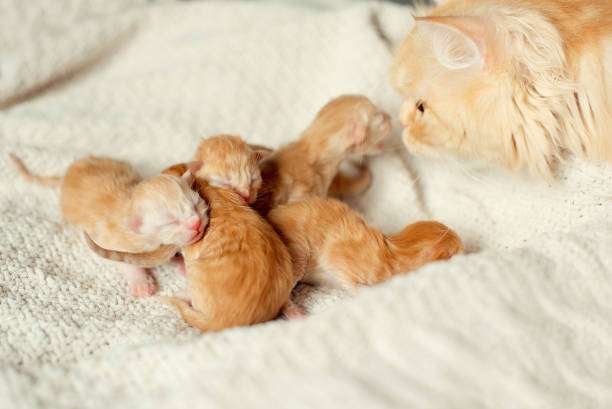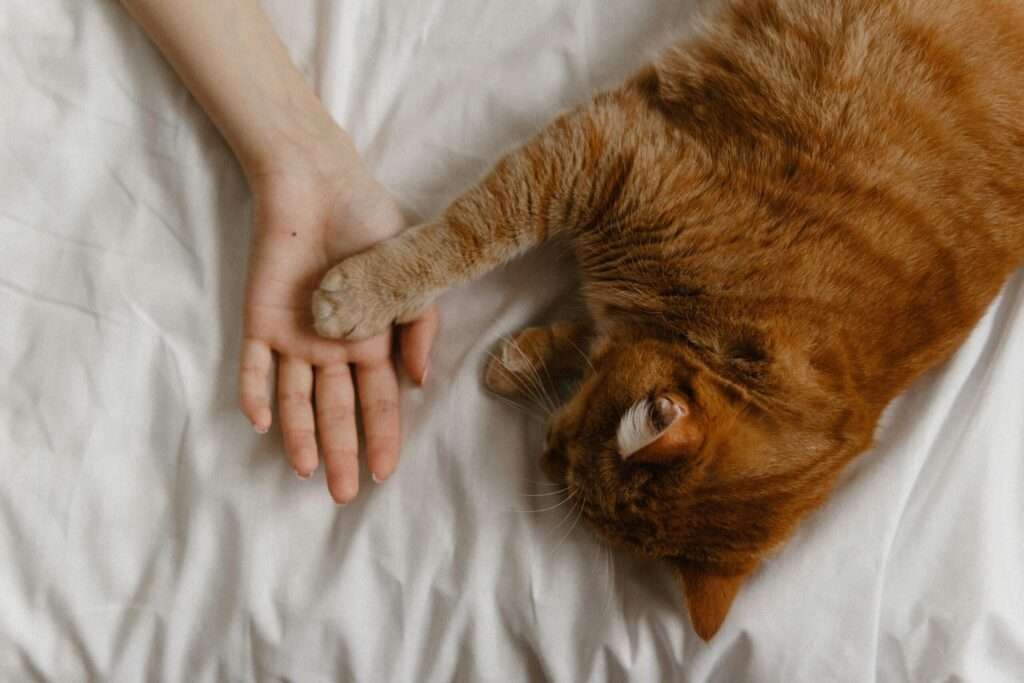Have you ever noticed that your cat poops in the litter box but then quickly runs and pees in random places around the house They might be peeing on the walls or even on your bed. This common issue can be frustrating and confusing for cat owners. You may be at your wit’s end trying to figure out what’s going on and need some help. Here are some reasons why this might happen and what you can do about it.
Table of Contents
ToggleWhy Is My Cat Peeing Outside the Litter Box?
Understanding why your cat is peeing outside the litter box is crucial to addressing the issue effectively. If your cat is doing this, they are sending you a message that something is wrong and they need your help. Cats may avoid the litter box for several reasons, ranging from medical to behavioral. Urinating or defecating outside of a litter box has four main causes. Number one, the cat has a medical problem. Number two, the cat is marking their territory. Number three, the cat might be stressed. Number four, the cat doesn’t like something about the box.
Health problems like urinary tract infections or bladder stones can make peeing painful, causing cats to associate the litter box with discomfort. A dirty litter box and uncomfortable litter can also deter a cat from using it. Stress and anxiety, triggered by changes in the household or other pets, can lead to inappropriate peeing as a way to mark territory or express discomfort. You first need to identify the main root cause behind this behavior.
Male Cat Peeing Outside the Litter Box
If you have a male cat, especially an unneutered one like mine, there is a chance that it is trying to mark its territory. Male cats mark their territory by spraying urine on both vertical and horizontal surfaces, usually due to territorial stress. Male cats that spray also use their litter box normally and typically have a few strategic locations they mark with urine. A cat that is spraying will look different from a cat that is urinating. A cat spraying will walk up to something, sniff, turn around, their tail will quiver, and then spray. A cat that urinates will typically walk up, sniff, squat, and pee. If your cat is spraying, that’s a separate issue.
Cats Peeing Outside the Litter Box: Reasons and Fixes

Medical Issues
First off, medical causes. You need to make sure that your cat isn’t sick. Common causes of FIE include bladder inflammation and infections, kidney disease, diabetes, diarrhea, constipation, arthritis, or anything that makes urinating or defecating painful. Sometimes cats with medical issues prefer using sinks or bathtubs as a toilet, and we don’t know why.
What to Do:
If your cat is going outside the litter box, the first thing you must do is get them checked by a veterinarian to ensure there’s no underlying health problem. Bringing in a urine sample can also be helpful. This step is important to ensure your cat is healthy and not in pain.
Litter Box Problems
Sometimes, the litter box itself might be the problem. Cats are very particular about their bathroom habits and any change can upset them.
Cleanliness: Cats like a clean litter box. If the box is too dirty, they might avoid using it for peeing. Pooping takes less time, so they might tolerate a dirty box for that but not for peeing. Type of Litter: Cats can be picky about the type of litter. Some cats prefer clumping litter, while others might like non-clumping or even a particular scent.
Litter Box Size and Type: The size and type of the litter box matter too. A box that is too small or has high sides might be uncomfortable. Some cats prefer open boxes while others like covered ones. Number of Litter Boxes: The rule of thumb is to have one more litter box than the number of cats you have. So, if you have one cat, you should have at least two litter boxes.
Stress and Anxiety: Many things can stress cats out. Changes in the household, other animals, people, changing the litter, moving furniture, or even a mirror can be sources of stress.
What to Do:
Keep the litter box clean by scooping it daily and changing the litter regularly. Try different types of litter to see which one your cat prefers. Make sure the box is the right size and type for your cat. And ensure you have enough litter boxes around the house. Try to identify any changes or stressors in your cat’s environment. Provide a quiet and safe space for your cat to relax. Use pheromone sprays or diffusers, which can help calm your cat. Spend more time with your cat to reassure them.
Behavioral Issues
Behavioral issues can also lead to improper peeing habits. They might exhibit unique behaviors, like running out of the box quickly after using it, sniffing and walking away, or putting two feet in and walking away. Sometimes, it can be a learned behavior from a previous negative experience with the litter box.
What to Do:
To resolve this, ensure the litter box is clean and accessible, consider using different types of litter, and place the box in a quiet, private location to minimize stress and encourage proper use.
How to Discipline a Cat for Peeing Outside the Litter Box
It’s important to approach this issue with patience and care, rather than punishment. Here’s how you can guide your cat towards better behavior:
Positive Reinforcement: Reward your cat when they use the litter box properly. Give them treats, praise, or playtime as a reward. This will encourage them to continue the good behavior.
Clean Accidents Thoroughly: Clean any areas where your cat has peed outside the litter box with an enzymatic cleaner. This will remove the scent completely, preventing your cat from peeing there again.
Avoid Punishment: Never punish your cat for peeing outside the litter box. Yelling, hitting, or rubbing their nose in it can create more stress and make the problem worse. Cats do not understand punishment the same way dogs do, and it can lead to fear and anxiety.
Redirect to the Litter Box: If you catch your cat peeing outside the litter box, gently pick them up and place them in the litter box. This helps them associate the correct location with the act of peeing.
Maintain a Routine: Cats thrive on routine. Keep feeding times, playtimes, and litter box cleaning times consistent. A stable routine can reduce stress and help with proper litter box use.
Litter box problems can be frustrating, but with trial and error, you can learn what’s bothering your cat and modify the situation. You’re more likely to succeed if the problem hasn’t been going on for long, and if you have only one cat. Remember, patience and observation are key to resolving this issue. Medical Check-Up: Always start with a vet visit to rule out any health problems. If you’ve tried everything and still have issues, consult your local veterinarian or a behaviorist. They can help identify and fix the problem.



